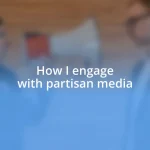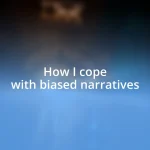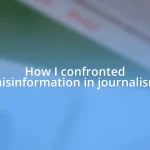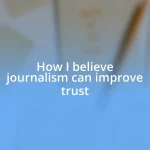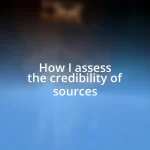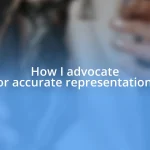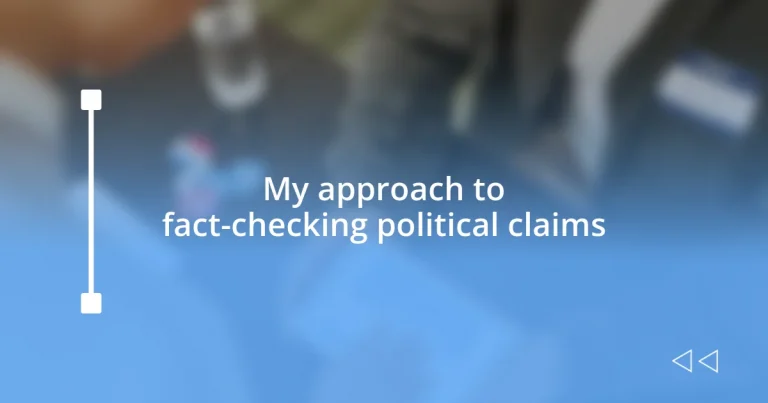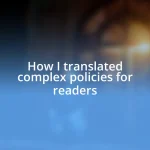Key takeaways:
- Fact-checking is essential for verifying the accuracy of political claims, requiring a discerning evaluation of sources, context, and motivations behind statements.
- Identifying the type of claim (fact, opinion, statistic, or hyperbole) and understanding the intent and context can prevent the spread of misinformation and misleading narratives.
- Using reliable fact-checking tools and presenting clear, visually engaging results enhances understanding and empowers informed discussions on political issues.
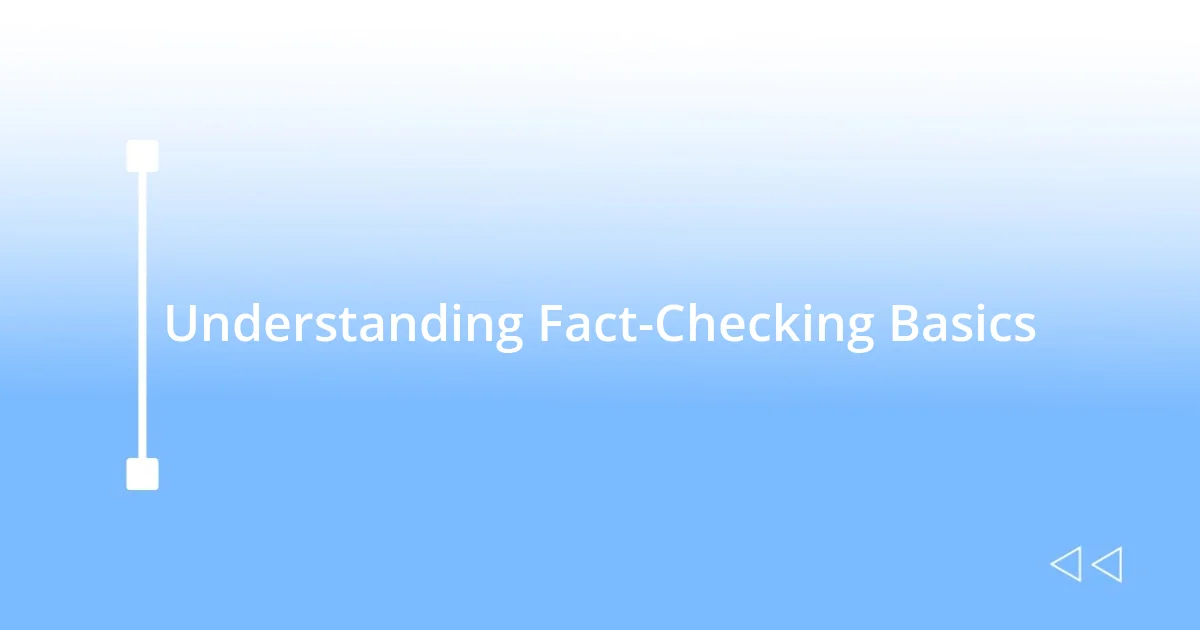
Understanding Fact-Checking Basics
Fact-checking is fundamentally about verifying the accuracy of claims, especially in the political arena where misinformation can spread like wildfire. I remember an instance during an election when a bold claim about a candidate’s voting record made headlines. It propelled me to dive deeper into archives and legislative records, revealing a different narrative. Isn’t it crucial to pause and question the initial impact of such statements?
At its core, fact-checking involves evaluating sources and context. I learned early on that not all information comes from credible outlets; even seemingly reputable sources can misinterpret or cherry-pick data. This reality brought me to ask—who benefits from the claim being made? Understanding the motivation behind a statement can sometimes be as important as the claim itself.
Moreover, fact-checking isn’t just a skill; it’s a responsibility we all carry. I often find myself sharing the facts I uncover with friends, encouraging discussions that challenge assumptions—the kind of enlightening exchanges that make us rethink our views. How can we expect to participate meaningfully in democracy if we don’t engage critically with the information that shapes our understanding?
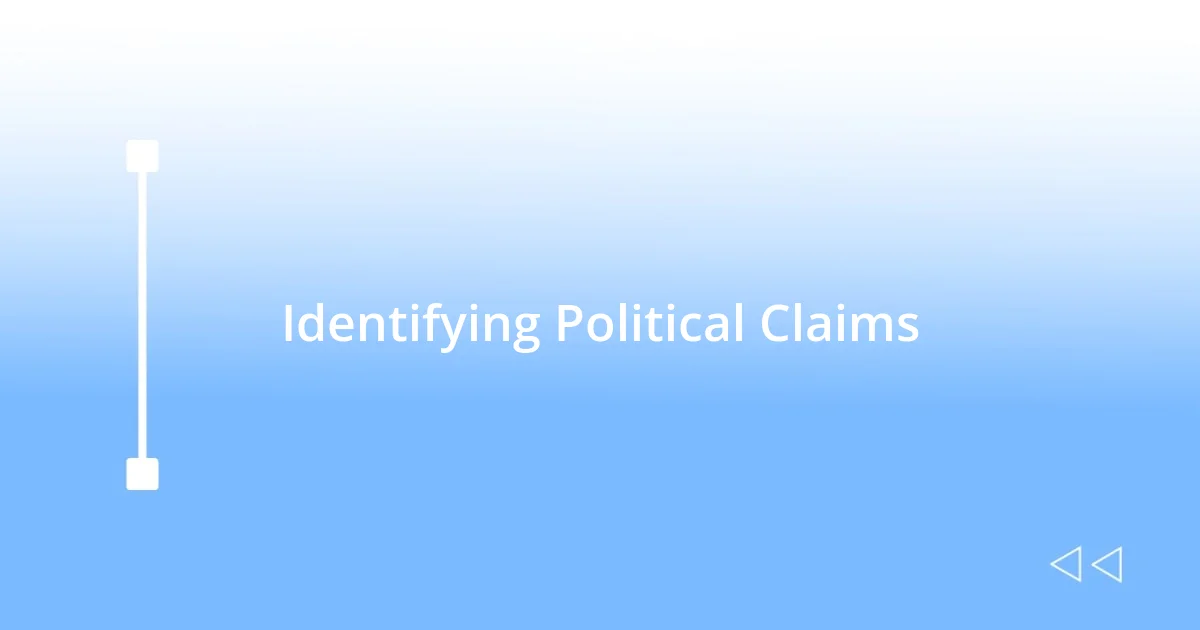
Identifying Political Claims
Identifying political claims requires a keen understanding of language and context. I often recall a time when a politician stated, “Our education system is failing,” without backing it up with evidence. This sweeping declaration sparked outrage but didn’t consider various factors like funding or curriculum changes. Recognizing the language used can help me determine whether a claim is an opinion or a fact.
When examining political claims, it’s vital to differentiate between opinion-based statements and data-driven assertions. I’ve noticed that politicians frequently use emotive language, which can cloud the actual data. For example, when a public figure claims to have “record-breaking support,” I now know to look closely at the specifics—like what constitutes “record-breaking” and how it was measured. It’s this inquiry that transforms uncertainty into clarity.
The nuances of political claims can be challenging to navigate. During a recent community forum, a speaker referenced misleading statistics to hype a local initiative. I felt compelled to probe deeper, ultimately discovering that the data was outdated. It’s moments like these that remind me of the importance of digging for the truth behind what is said. How many decisions are influenced by unverified claims, often rooted in half-truths?
| Type of Claim | Description |
|---|---|
| Fact | A verifiable statement that can be proven true or false. |
| Opinion | A personal belief or judgment that is subjective and not universally provable. |
| Statistic | A numerical representation often used to substantiate a claim, requiring context for accuracy. |
| Hyperbole | Exaggerated statements that are not meant to be taken literally, often used for emphasis. |
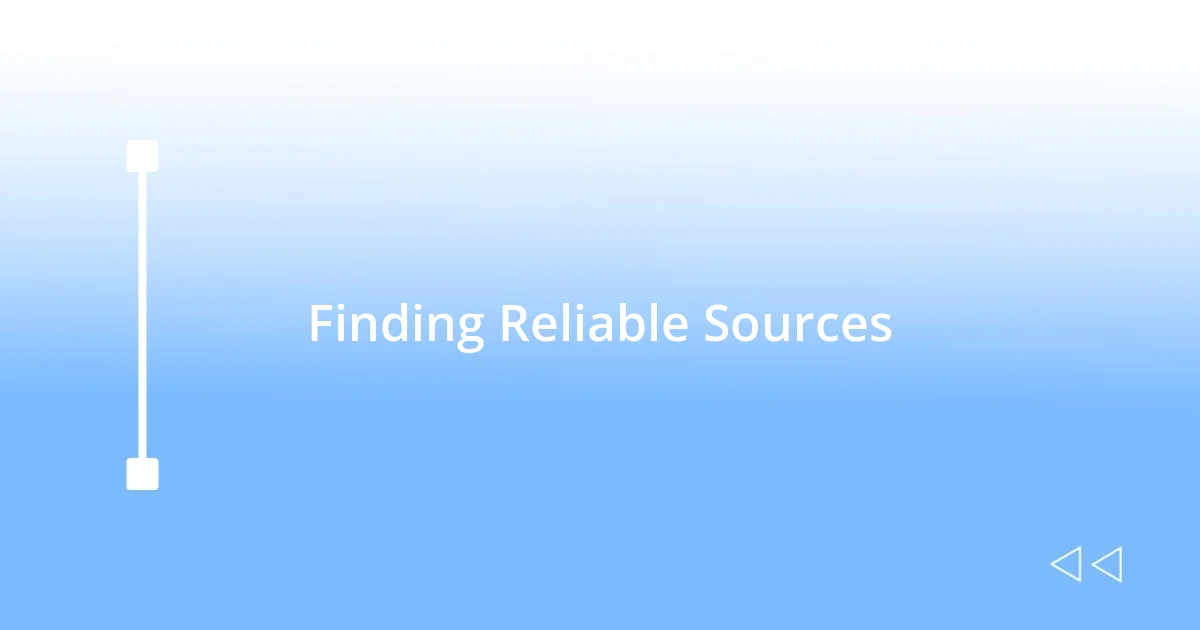
Finding Reliable Sources
Finding reliable sources can be a daunting task, especially in today’s digital age where information is abundant but not always accurate. In my experience, I’ve often felt overwhelmed by the sheer volume of data available online. I’ve learned to focus on a few key types of sources that consistently provide trustworthy information. For example, academic journals and government publications typically undergo rigorous peer-review processes, which adds a level of credibility. In contrast, anecdotal stories shared on social media can be enticing but often lack the necessary context and verification.
To make your search for reliable sources easier, consider these tips:
- Peer-Reviewed Journals: Look for academic research that has been reviewed by experts in the field.
- Official Government Websites: These often contain data and statistics that are credible and reliable.
- Respected News Outlets: Established media organizations usually have strict editorial standards.
- Fact-Checking Websites: Specialized sites evaluate the accuracy of statements made by public figures.
- Books by Experts: Authors with recognized credentials in their fields can provide insightful perspectives backed by research.
I’ve found that developing a discerning eye for these types of sources can not only bolster my confidence but also empower me to share well-founded information with others. It’s essential to remember that a reliable source can transform a conversation, turning uncertainty into informed dialogue.
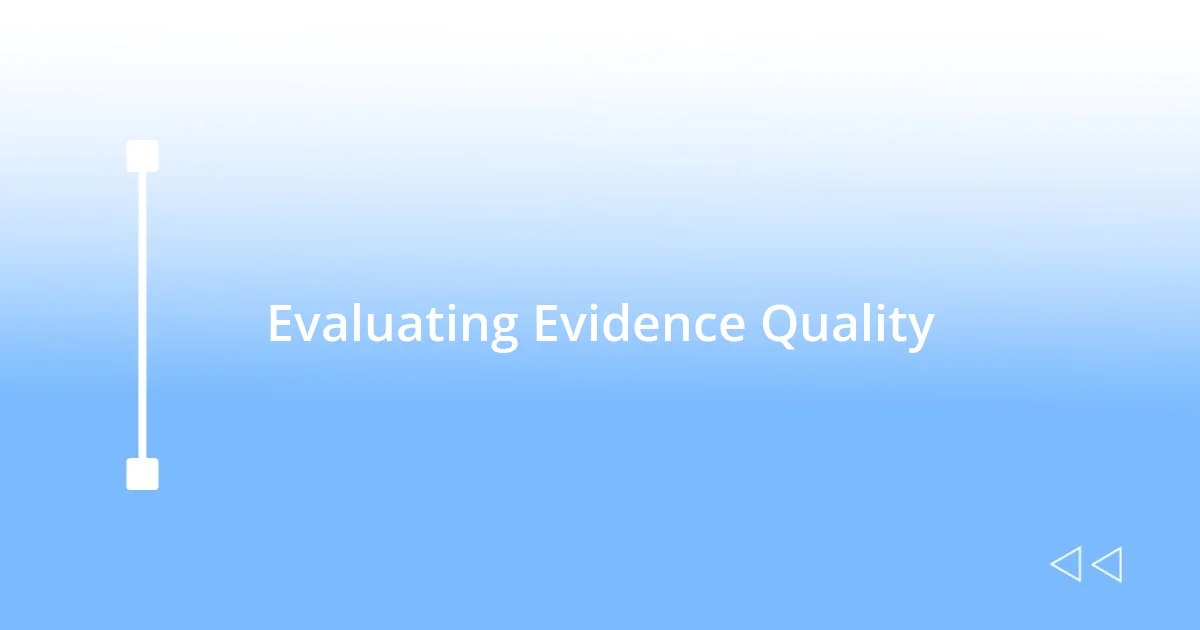
Evaluating Evidence Quality
When I evaluate evidence quality, the first thing I look for is the source. A while back, I stumbled upon a claim in a viral post that asserted a specific policy had increased crime rates by 50%. Curious, I traced the claim back to an obscure blog with no citations. It hit me then: the credibility of the source can make or break the trustworthiness of the evidence.
Another important aspect is the objectivity of the evidence presented. I remember reviewing an article that passionately argued for a health policy, but the data was selected to support only one viewpoint. It made me wonder, how often are we swayed by one-sided information? The best evidence should come from unbiased sources and include multiple perspectives to paint a complete picture.
Lastly, the context in which evidence is presented matters greatly. Observing a politician use a cherry-picked statistic during a debate brought to light how selective data can distort reality. As I reflected on that moment, I thought, how many times have I seen similar tactics? Understanding the broader context helps me to avoid falling victim to misleading narratives and ensures that my conclusions are well-founded.
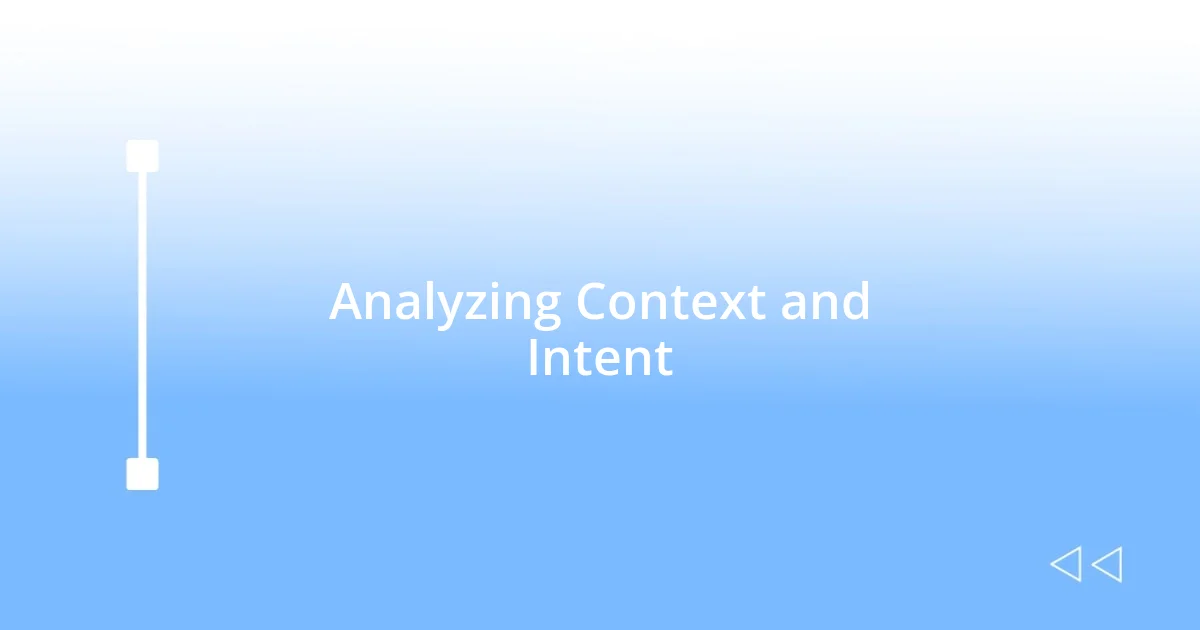
Analyzing Context and Intent
When analyzing context and intent, I’ve learned to dig a little deeper, beyond the surface of a political claim. I remember a time when a politician made sweeping statements about economic growth, claiming credit for a rise in employment. However, by taking a closer look at the broader economic trends, I realized that this growth was actually part of a longer-term recovery that began years earlier. It’s fascinating how intent can skew a narrative, isn’t it? Understanding the timing and background of claims can reveal whether they’re genuinely backed by data or merely clever framing.
One of the most eye-opening experiences I’ve had was during a heated debate where a candidate cited a disturbing statistic about crime rates. In the moment, I only absorbed the fear in their voice. However, after researching the data used, I discovered it was based on a narrow timeframe without considering external factors like economic changes or community programs. I felt misled, and that pushed me to question: how often do we accept claims at face value because they resonate with our emotions? Such moments emphasize the importance of assessing the full context before forming an opinion.
Ultimately, intent plays a crucial role in shaping political communication. I once encountered a video circulating on social media that featured a politician delivering an emotional speech. Initially, I was moved, but as I looked closer, I recognized the use of loaded language intended to provoke a reaction rather than provide clarity. This experience reminded me that every claim is more than just words; it reflects the objectives of the speaker. Identifying these underlying motives has been key for me in transforming fleeting emotions into critical thought.
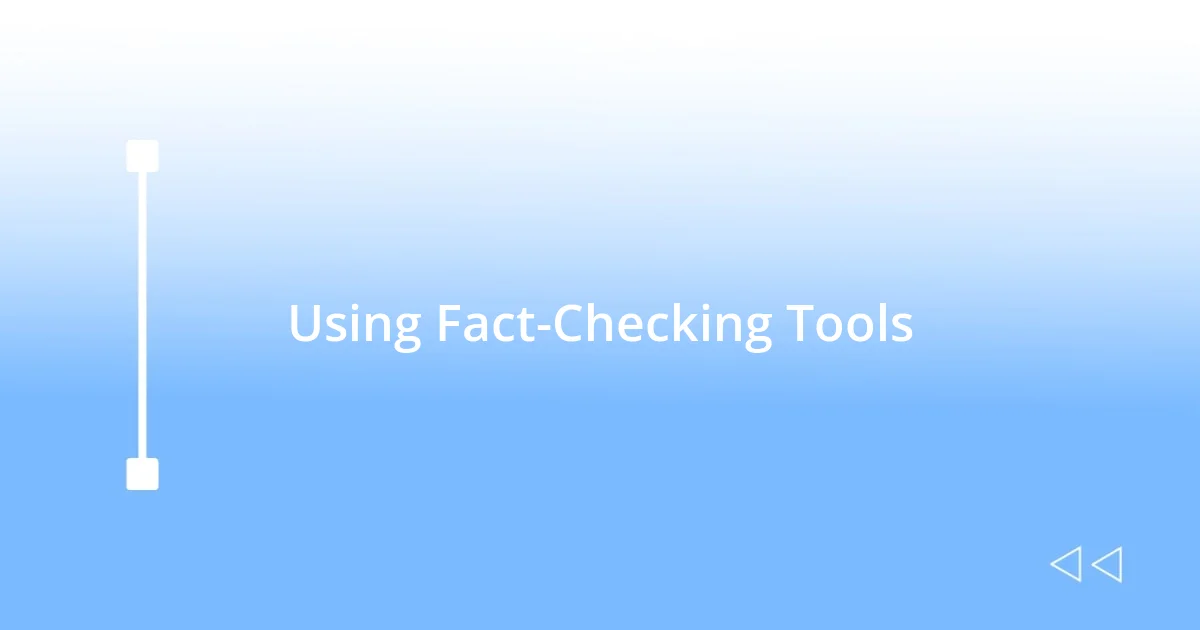
Using Fact-Checking Tools
When it comes to using fact-checking tools, I often find myself turning to well-known databases like Snopes or FactCheck.org. I remember when a friend shared a sensational headline about a political figure’s supposed scandal. Instead of getting caught up in the frenzy, I quickly checked Snopes, which provided a detailed breakdown of the claims and context behind the story. It was like uncovering a hidden truth that many others were overlooking—what a relief to have verified information at my fingertips!
Another resource I rely on is browser extensions that flag questionable sources as I do my online research. Not long ago, while scrolling through social media, I was confronted with a startling post that claimed a significant policy change affected millions. Thanks to my browser’s built-in fact-checker, I could assess the credibility of the source right away. How empowering it felt to navigate through misinformation swiftly and confidently! These handy tools make it so much easier to sort out credible claims from sensationalistic stories that thrive on clicks rather than facts.
I also appreciate community-driven platforms like Wikipedia, which often include citations that lead me to original sources. I had a moment of realization when I found a controversial political statistic being circulated widely in a group chat. Instead of joining the fray, I traced its origin through Wikipedia’s references. Discovering that the statistic was misrepresented made me wonder: how often is information distorted to fit an agenda? Engaging with these fact-checking tools not only deepens my understanding but also helps prevent the spread of misinformation.
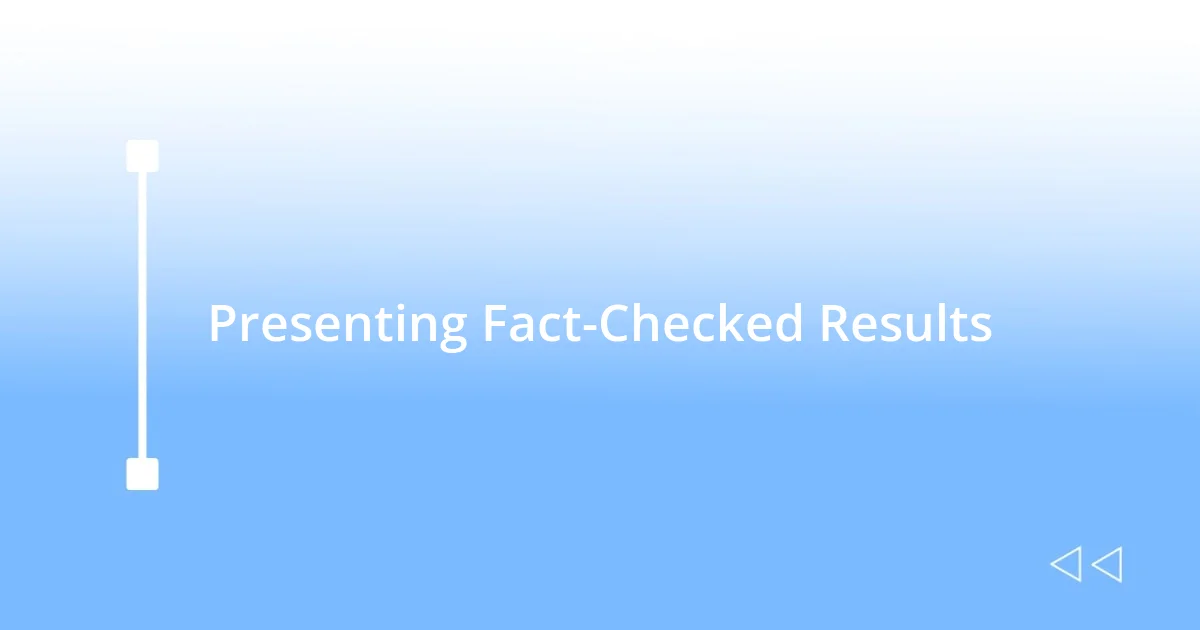
Presenting Fact-Checked Results
When it comes to presenting fact-checked results, I believe clarity is paramount. I recall a time when I evaluated conflicting reports about a new education policy. Instead of rushing to share my findings, I took the time to present a clear, concise comparison of the claims and facts. This approach not only helped my audience grasp the complexities more easily but also fostered a more informed discussion. Isn’t it refreshing when information is laid out plainly, so everyone can engage without confusion?
One strategy I often employ is to highlight not just the outcome of my fact-checking but also the implications. For instance, after debunking a viral claim about healthcare coverage, I crafted a summary that laid out what the correct information meant for people. It was rewarding to receive feedback from readers who felt empowered to make more informed decisions based on the accurate data I provided. Sharing these insights transforms raw data into meaningful narratives that resonate with others.
I’ve also found that visual aids can significantly enhance the effectiveness of presenting fact-checked results. The other day, while discussing contentious election data, I created an easy-to-understand infographic that depicted the changes over time. The response was overwhelmingly positive! People appreciated the visual representation, which made it easier for them to grasp the larger trends. How often do we struggle with dense paragraphs when a single image could do the job? Balancing textual explanations with visuals can truly elevate the conversation surrounding political claims.
